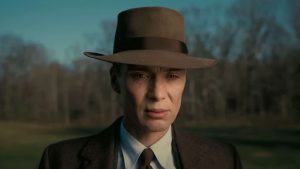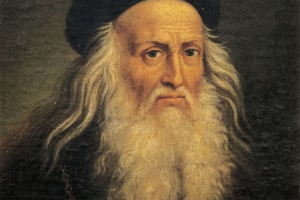magiccarouselsundays.com – Christopher Nolan, known for his complex narratives and deep philosophical themes, has consistently pushed the boundaries of filmmaking. His works such as Inception, The Dark Knight trilogy, and Interstellar have captivated audiences with their intricate plots, stunning visuals, and profound explorations of time, identity, and morality. In his latest endeavor, Oppenheimer, Nolan takes on a deeply personal and historical story: the life of J. Robert Oppenheimer, the brilliant physicist at the heart of the Manhattan Project, who oversaw the creation of the atomic bomb during World War II. The film promises to be a powerful examination of science, power, and the moral dilemmas that accompany groundbreaking discoveries.
The film delves into the complexities of Oppenheimer’s life and the monumental impact of his work, not only on the course of history but also on his personal conscience. In this article, we will explore the intricacies of Nolan’s Oppenheimer, from its plot and characters to its thematic depth, and analyze how the film reflects the director’s unique storytelling style and his ability to bring historical events to life with intense emotional resonance.
The Plot: A Tense and Tragic Journey
Oppenheimer takes us into the tumultuous world of J. Robert Oppenheimer, played by Cillian Murphy, a scientist and physicist who became known as the “father of the atomic bomb.” Set against the backdrop of World War II, the film focuses on the secretive Manhattan Project, a large-scale effort to build an atomic bomb before Nazi Germany or Japan could develop one. As the project progresses, Oppenheimer is confronted with the immense scientific and ethical consequences of his work, which leads him down a path of internal conflict and moral reckoning.
The film opens in the 1930s when Oppenheimer, a talented but relatively unknown physicist, begins to make a name for himself in the scientific community. It traces his rise to prominence, the hiring of his team of scientists, and his appointment to lead the Manhattan Project in Los Alamos, New Mexico. Nolan deftly moves between timelines, creating a non-linear narrative structure that keeps the audience engaged and adds to the complexity of Oppenheimer’s journey.
At the heart of Oppenheimer is the moral dilemma surrounding the development of the atomic bomb. As the bomb nears completion, Oppenheimer is torn between his desire to end the war and the realization that his creation could bring about unprecedented destruction. The film vividly depicts the emotional and intellectual struggle he faces as he grapples with the consequences of unleashing a weapon of mass destruction. Nolan also explores the tensions between Oppenheimer and his colleagues, the military, and political figures, highlighting the ways in which power, science, and morality intersect.
As the bomb is tested in the desert at the Trinity site in July 1945, Oppenheimer famously recalls a line from the Hindu scripture, the Bhagavad Gita: “Now I am become Death, the destroyer of worlds.” The film doesn’t shy away from the weight of this moment, showing Oppenheimer’s growing sense of guilt and the internal conflict that follows the success of his project.
However, the story doesn’t end with the bomb’s detonation. The film also explores the political fallout in the aftermath of World War II, particularly Oppenheimer’s shifting relationship with the U.S. government. As Cold War tensions rise, Oppenheimer becomes a controversial figure, accused of communist sympathies and placed under scrutiny during the McCarthy era. His later years are marked by regret, bitterness, and a sense of betrayal by the very government that once celebrated him.
The Characters: A Brilliant and Haunted Mind
Christopher Nolan’s decision to center Oppenheimer on the titular character, portrayed by Cillian Murphy, allows the film to explore the inner workings of a man who both shaped history and was profoundly impacted by it. Murphy, known for his nuanced performances, brings Oppenheimer to life with an intensity and vulnerability that elevates the film to an emotional level beyond its historical significance.
J. Robert Oppenheimer: The Reluctant Creator of Destruction
Oppenheimer’s character is the emotional core of the film, and Nolan’s direction allows us to see the man behind the scientific genius. Oppenheimer is depicted as a deeply intellectual and ambitious figure, driven by a desire to understand the mysteries of the universe. Yet, he is also portrayed as deeply conflicted, aware of the potentially catastrophic consequences of his work. The film emphasizes Oppenheimer’s inner turmoil, showing how he is haunted by the bomb’s destructive potential even as he sees it as a means to end the war.
As the war comes to an end, Oppenheimer’s moral conflict only intensifies. His relationships with his colleagues, political leaders, and the military become strained as he grapples with the fallout of his creation. This sense of isolation is central to the film’s portrayal of Oppenheimer, who, despite his scientific achievements, becomes a man at odds with the world around him. Murphy’s performance captures the nuances of Oppenheimer’s psyche—his ambition, guilt, and vulnerability—and allows the audience to empathize with a man who, though responsible for a world-altering invention, was also deeply troubled by the consequences of his actions.
The Supporting Characters: Colleagues, Rivals, and Political Forces
In addition to Oppenheimer, the film introduces a cast of supporting characters who add depth to the narrative and underscore the various tensions at play within the Manhattan Project and beyond. Key figures include:
-
Leslie Groves (Matt Damon): The military general overseeing the Manhattan Project, Groves is a pragmatic and no-nonsense leader. His relationship with Oppenheimer is one of mutual respect but also tension, as Groves pushes Oppenheimer and his team to work faster while remaining firmly in control of the project. Damon’s portrayal brings an edge of authority to the character, highlighting the balance of power between military oversight and scientific discovery.
-
Kitty Oppenheimer (Emily Blunt): Oppenheimer’s wife, Kitty, plays a critical role in the film as both a personal and emotional anchor for him. Blunt’s portrayal of Kitty offers a complex portrayal of a woman caught between loyalty to her husband and the growing realization of the consequences of his work. Kitty’s emotional journey reflects the broader themes of sacrifice and moral ambiguity that run throughout the film.
-
Niels Bohr (Kenneth Branagh): The famous Danish physicist and one of Oppenheimer’s mentors, Bohr represents the intellectual community that played a significant role in the development of nuclear weapons. Branagh’s performance is that of a man caught between scientific pursuit and moral responsibility.
-
Lewis Strauss (Robert Downey Jr.): A key political figure in Oppenheimer’s later life, Strauss represents the tensions between science and government politics. His role in Oppenheimer’s eventual downfall, as well as his rivalry with Oppenheimer, adds a layer of complexity to the film’s portrayal of the Cold War and McCarthyism.
These supporting characters not only help to flesh out Oppenheimer’s world but also serve as symbols of the various forces—political, scientific, and personal—that shaped the development of the atomic bomb and its aftermath.
The Themes: Science, Morality, and the Cost of Power
At its heart, Oppenheimer is a film about the profound moral dilemmas that accompany scientific discovery and the pursuit of knowledge. Through Oppenheimer’s journey, Nolan grapples with questions of ethics, responsibility, and the role of science in shaping human history. The themes of power, regret, and the consequences of creation are explored through Oppenheimer’s internal struggles and the external forces that challenge his decisions.
The Dual Nature of Science
One of the central themes in Oppenheimer is the duality of science: its potential to both advance and destroy. The atomic bomb is a symbol of this contradiction—it is a marvel of human intellect and ingenuity, capable of bringing about both an end to war and an irreversible destruction of life. Nolan explores the responsibility that comes with such powerful discoveries, highlighting Oppenheimer’s internal conflict as he recognizes the potential for both good and evil in his work.
The film asks whether the pursuit of knowledge is worth the moral cost and whether scientists bear responsibility for the consequences of their discoveries. Oppenheimer’s moral reckoning after the bomb’s detonation reveals the complex relationship between scientific progress and the ethical choices that shape its application.
The Corruption of Power
Another prominent theme in the film is the corrupting influence of power. Oppenheimer’s experience mirrors the historical moment in which science and politics become inextricably intertwined. The Manhattan Project was not just about scientific discovery; it was also a race for political dominance during World War II. As the bomb’s potential for destruction became clearer, Oppenheimer found himself at the center of a struggle between his own conscience, the military’s demands, and the political power that sought to control the weapon.
The film also delves into the ways in which Oppenheimer’s relationship with the U.S. government evolves, culminating in his eventual fall from grace. The McCarthy era, with its fear of communism and political purges, plays a crucial role in Oppenheimer’s later life, showing how the very forces that once celebrated his genius turned against him as Cold War tensions escalated.
Guilt, Regret, and Redemption
Finally, Oppenheimer explores the themes of guilt, regret, and the search for redemption. After the bomb is used on Japan, Oppenheimer is wracked with guilt and questions whether the creation of such a weapon was justified. The film’s portrayal of Oppenheimer’s later years—marked by his public disgrace and personal remorse—highlights the lasting impact of his choices and the search for some form of atonement. Nolan presents Oppenheimer as a tragic figure, a man whose brilliance was overshadowed by the destructive power he unleashed on the world.
Cinematic Vision: Nolan’s Direction and Style
Christopher Nolan’s distinctive directorial style plays a pivotal role in Oppenheimer, blending his trademark narrative complexity with stunning visuals and sound design. Known for his non-linear storytelling, Nolan weaves multiple timelines and perspectives into the film, creating a sense of tension and urgency. The film’s structure allows for an exploration of Oppenheimer’s psychological and emotional journey, moving back and forth in time as we see the consequences of his work unfold.
The film’s cinematography, led by Hoyte van Hoytema, is breathtaking, capturing both the vastness of the New Mexico desert and the intimate moments of Oppenheimer’s internal conflict. The visual style enhances the film’s themes, using light and shadow to reflect the duality of Oppenheimer’s world—the brilliance of his scientific mind and the darkness of the bomb he created.
Additionally, the film’s score, composed by Ludwig Göransson, complements its intense emotional tone. The music builds tension and enhances the dramatic moments, adding to the sense of foreboding as the film explores the cost of human ambition.
Conclusion: A Powerful Exploration of Science and Morality
Oppenheimer is a remarkable achievement in filmmaking, blending history, science, and human emotion into a powerful narrative. Through Christopher Nolan’s direction, Cillian Murphy’s haunting portrayal of Oppenheimer, and a talented ensemble cast, the film explores the moral complexities of scientific discovery and the weight of power. Nolan’s trademark style—his intricate storytelling, nonlinear narrative, and deep thematic exploration—creates a film that is both intellectually stimulating and emotionally resonant. At its core, Oppenheimer is a film about the moral reckoning that accompanies great achievement and the unintended consequences of creation, reminding us of the profound responsibility that comes with shaping the future.



